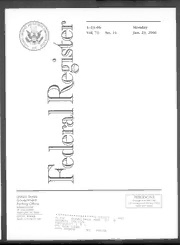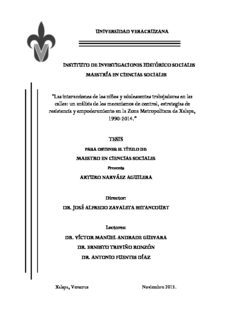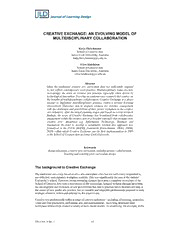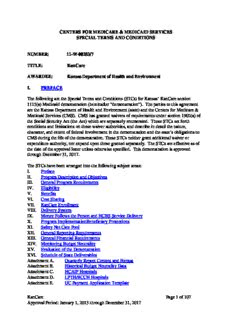
Kansas KarCare 1115 Admin Record PDF
Preview Kansas KarCare 1115 Admin Record
CENTERS FOR MEDICARE & MEDICAID SERVICES SPECIAL TERMS AND CONDITIONS NUMBER: 11-W-00283/7 TITLE: KanCare AWARDEE: Kansas Department of Health and Environment I. PREFACE The following are the Special Terms and Conditions (STCs) for Kansas’ KanCare section 1115(a) Medicaid demonstration (hereinafter “demonstration”). The parties to this agreement are the Kansas Department of Health and Environment (state) and the Centers for Medicare & Medicaid Services (CMS). CMS has granted waivers of requirements under section 1902(a) of the Social Security Act (the Act) which are separately enumerated. These STCs set forth conditions and limitations on those waiver authorities, and describe in detail the nature, character, and extent of federal involvement in the demonstration and the state’s obligations to CMS during the life of the demonstration. These STCs neither grant additional waiver or expenditure authority, nor expand upon those granted separately. The STCs are effective as of the date of the approval letter unless otherwise specified. This demonstration is approved through December 31, 2017. The STCs have been arranged into the following subject areas: I. Preface II. Program Description and Objectives III. General Program Requirements IV. Eligibility V. Benefits VI. Cost Sharing VII. KanCare Enrollment VIII. Delivery System IX. Money Follows the Person and HCBS Service Delivery X. Program ImplementationBeneficiary Protections XI. Safety Net Care Pool XII. General Reporting Requirements XIII. General Financial Requirements XIV. Monitoring Budget Neutrality XV. Evaluation of the Demonstration XVI. Schedule of State Deliverables Attachment A. Quarterly Report Content and Format Attachment B. Historical Budget Neutrality Data Attachment C. HCAIP Hospitals Attachment D. LPTH/BCCH Hospitals Attachment E. UC Payment Application Template KanCare Page 1 of 107 Approval Period: January 1, 2013 through December 31, 2017 Attachment F. DSRIP Planning Protocol Attachment G. DSRIP Funding and Mechanics Protocol Attachment H. Ombudsman Plan Attachment I. Verification of Beneficiary’s MCO Enrollment Attachment J. UC Pool Uniform Percentages Attachment K. DSRIP Pool Focus Areas Attachment L. ID/DD Pilot Project KanCare Page 2 of 107 Approval Period: January 1, 2013 through December 31, 2017 II. PROGRAM DESCRIPTION AND OBJECTIVES On August 6, 2012, the State of Kansas submitted a Medicaid section 1115 demonstration proposal, entitled KanCare. KanCare will operate concurrently with the state’s section 1915(c) Home and Community-Based Services (HCBS) waivers and together provides the authority necessary for the state to require enrollment of almost all Medicaid beneficiaries (including the aged, disabled, and some dual eligibles) across the state into a managed care delivery system to receive state plan and HCBS waiver services. This represents an expansion of the state’s previous managed care program, which consisted of HealthWave (managed care organization) and HealthConnect Kansas (primary care case management), and provided services to children, pregnant women, and parents in the state’s Medicaid program. KanCare also includes a safety net care pool to support certain hospitals that incur uncompensated care costs for Medicaid beneficiaries and the uninsured, and to provide incentives to hospitals for programs that result in delivery system reforms that enhance access to health care and improve the quality of care. This five year demonstration will: • Maintain Medicaid state plan eligibility; • Maintain Medicaid state plan benefits; • Allow the state to require eligible individuals to enroll in managed care organizations (MCOs) to receive covered benefits through such MCOs, including individuals on HCBS waivers, except: American Indian/Alaska Natives will be presumptively enrolled in KanCare but o will have the option of affirmatively opting-out of managed care. • Provide benefits, including long-term services and supports (LTSS) and HCBS, via managed care; and • Create a Safety Net Care Pool to support hospitals that provide uncompensated care to Medicaid beneficiaries and the uninsured. The KanCare demonstration will assist the state in its goals to: • Provide integration and coordination of care across the whole spectrum of health to include physical health, behavioral health, mental health, substance use disorders and LTSS. • Improve the quality of care Kansas Medicaid beneficiaries receive through integrated care coordination and financial incentives paid for performance (quality and outcomes); • Control Medicaid costs by emphasizing health, wellness, prevention and early detection as well as integration and coordination of care; and • Establish long-lasting reforms that sustain the improvements in quality of health and wellness for Kansas Medicaid beneficiaries and provide a model for other states for Medicaid payment and delivery system reforms as well. The state’s demonstration evaluation will include an assessment of the following hypotheses: 1. By holding MCOs to outcomes and performance measures, and tying measures to meaningful financial incentives, the state will improve health care quality and reduce costs; 2. The KanCare model will reduce the percentage of beneficiaries in institutional settings by providing additional HCBS and supports to beneficiaries that allow them KanCare Page 3 of 107 Approval Period: January 1, 2013 through December 31, 2017 to move out of an institutional setting when appropriate and desired; 3. The state will improve quality in Medicaid services by integrating and coordinating services and eliminating the current silos between physical health, behavioral health, mental health, substance use disorder, and LTSS; and 4. KanCare will provide integrated care coordination to individuals with developmental disabilities, which will improve access to health services and improve the health of those individuals. KanCare Page 4 of 107 Approval Period: January 1, 2013 through December 31, 2017 III. GENERAL PROGRAM REQUIREMENTS 1. Compliance with Federal Non-Discrimination Statutes. The state must comply with all applicable federal statutes relating to non-discrimination. These include, but are not limited to, the Americans with Disabilities Act of 1990, title VI of the Civil Rights Act of 1964, section 504 of the Rehabilitation Act of 1973, and the Age Discrimination Act of 1975. 2. Compliance with Medicaid and Children’s Health Insurance Program (CHIP) Law, Regulation, and Policy. All requirements of the Medicaid program and CHIP for the separate CHIP population, expressed in law, regulation, and policy statement, not expressly waived or identified as not applicable in the waiver and expenditure authority documents (of which these terms and conditions are part), must apply to the demonstration. 3. Changes in Medicaid and CHIP Law, Regulation, and Policy. The state must, within the timeframes specified in law, regulation, or policy statement, come into compliance with any changes in federal law, regulation, or policy affecting the Medicaid or CHIP programs that occur during this demonstration approval period, unless the provision being changed is expressly identified as not applicable. 4. Impact on Demonstration of Changes in Federal Law, Regulation, and Policy. a. To the extent that a change in federal law, regulation, or policy requires either a reduction or an increase in federal financial participation (FFP) for expenditures made under this demonstration, the state must adopt, subject to CMS approval, a modified budget neutrality agreement for the demonstration as necessary to comply with such change. The modified budget neutrality agreement will be effective upon the implementation of the change. The trend rates for the budget neutrality agreement are not subject to change under this subparagraph. b. If mandated changes in the federal law require state legislation, the changes must take effect on the day such state legislation becomes effective, or on the last day such legislation was required to be in effect under the law. 5. State Plan Amendments. If a population eligible through the Medicaid state plan or CHIP state plan is affected by a change to the demonstration, a conforming amendment to the state plan may be required, except as otherwise noted in these STCs. 6. Changes Subject to the Amendment Process. Changes related to eligibility, enrollment, benefits, enrollee rights, delivery systems, cost sharing, evaluation design, sources of non- federal share of funding, budget neutrality, and other comparable program elements must be submitted to CMS as amendments to the demonstration. All amendment requests are subject to approval at the discretion of the Secretary in accordance with section 1115 of the Act. The state must not implement changes to these elements without prior approval by CMS. Amendments to the demonstration are not retroactive and FFP will not be available for changes to the demonstration that have not been approved through the amendment process set forth in STC 7below. KanCare Page 5 of 107 Approval Period: January 1, 2013 through December 31, 2017 7. Amendment Process. Requests to amend the demonstration must be submitted to CMS for approval no later than 120 days prior to the planned date of implementation of the change and may not be implemented until approved. CMS reserves the right to deny or delay approval of a demonstration amendment based on non-compliance with these STCs, including but not limited to failure by the state to submit required reports and other deliverables in a timely fashion according to the deadlines specified herein. Amendment requests must include, but are not limited to, the following: a. An explanation of the public process used by the state, consistent with the requirements of STC 14, to reach a decision regarding the requested amendment; b. A data analysis which identifies the specific “with waiver” impact of the proposed amendment on the current budget neutrality agreement. Such analysis shall include current total computable “with waiver” and “without waiver” status on both a summary and detailed level through the current approval period using the most recent actual expenditures, as well as summary and detailed projections of the change in the “with waiver” expenditure total as a result of the proposed amendment, which isolates (by Eligibility Group) the impact of the amendment; c. An up-to-date CHIP allotment neutrality worksheet, if necessary; d. A detailed description of the amendment, including impact on beneficiaries, with sufficient supporting documentation, including a conforming title XIX and/or title XXI state plan amendment, if necessary; and e. If applicable, a description of how the evaluation design will be modified to incorporate the amendment provisions. 8. Extension of the Demonstration. a. States that intend to request demonstration extensions under sections 1115(a), 1115(e) or 1115(f) must submit an extension request no later than 12 months prior to the expiration date of the demonstration. The chief executive officer of the state must submit to CMS either a demonstration extension request or a phase-out plan consistent with the requirements of STC 9. b. Compliance with Transparency Requirements 42 CFR Section 431.412: Effective April 27, 2012, as part of the demonstration extension requests the state must provide documentation of compliance with the transparency requirements 42 CFR Section 431.412 and the public notice and tribal consultation requirements outlined in STC 14, as well as include the following supporting documentation: i. Historical Narrative Summary of the Demonstration Project: The state must provide a narrative summary of the demonstration project, reiterate the objectives set forth at the time the demonstration was proposed and provide KanCare Page 6 of 107 Approval Period: January 1, 2013 through December 31, 2017 evidence of how these objectives have been met as well as future goals of the program. If changes are requested, a narrative of the changes being requested along with the objective of the change and desired outcomes must be included. ii. Special Terms and Conditions (STCs): The state must provide documentation of its compliance with each of the STCs. Where appropriate, a brief explanation may be accompanied by an attachment containing more detailed information. Where the STCs address any of the following areas, they need not be documented a second time. iii. Waiver and Expenditure Authorities: The state must provide a list along with a programmatic description of the waivers and expenditure authorities that are being requested in the extension. iv. Quality: The state must provide summaries of: External Quality Review Organization (EQRO) reports; managed care organization (MCO) reports; state quality assurance monitoring; and any other documentation that validates of the quality of care provided or corrective action taken under the demonstration. v. Financial Data: The state must provide financial data (as set forth in the current STCs) demonstrating the state’s detailed and aggregate, historical and projected budget neutrality status for the requested period of the extension as well as cumulatively over the lifetime of the demonstration. CMS will work with the state to ensure that federal expenditures under the extension of this project do not exceed the federal expenditures that would otherwise have been made. In doing so, CMS will take into account the best estimate of current trend rates at the time of the extension. In addition, the state must provide up to date responses to the CMS Financial Management standard questions. If title XXI funding is used in the demonstration, a CHIP Allotment Neutrality worksheet must be included. vi. Evaluation Report: The state must provide a narrative summary of the evaluation design, status (including evaluation activities and findings to date), and plans for evaluation activities during the extension period. The narrative is to include, but not be limited to, describing the hypotheses being tested and any results available. vii. Documentation of Public Notice (42 CFR section 431.408): The state must provide documentation of the state’s compliance with public notice process as specified in 42 CFR section 431.408 including the post-award public input process described in 431.420(c) with a report of the issues raised by the public during the comment period and how the state considered the comments when developing the demonstration extension application. KanCare Page 7 of 107 Approval Period: January 1, 2013 through December 31, 2017 9. Demonstration Phase-Out. The state may only suspend or terminate this demonstration in whole, or in part, consistent with the following requirements. a. Notification of Suspension or Termination: The state must promptly notify CMS in writing of the reason(s) for the suspension or termination, together with the effective date and a phase-out plan. The state must submit its notification letter and a draft phase-out plan to CMS no less than 5 months before the effective date of the demonstration’s suspension or termination. Prior to submitting the draft phase-out plan to CMS, the state must publish on its website the draft phase-out plan for a 30 day public comment period. In addition, the state must conduct tribal consultation in accordance with its approved tribal consultation state plan amendment (SPA). Once the 30-day public comment period has ended, the state must provide a summary of each public comment received the state’s response to the comment and how the state incorporated the received comment into a revised phase-out plan. b. The state must obtain CMS approval of the phase-out plan prior to the implementation of the phase-out activities. Implementation of phase-out activities must be no sooner than 14 days after CMS approval of the phase-out plan. c. Phase-out Plan Requirements: The state must include, at a minimum, in its phase-out plan the process by which it will notify affected beneficiaries, the content of said notices (including information on the beneficiary’s appeal rights), the process by which the state will conduct administrative reviews of Medicaid eligibility for the affected beneficiaries, and ensure ongoing coverage for eligible individuals, as well as any community outreach activities. d. Phase-out Procedures: The state must comply with all notice requirements found in 42 CFR §431.206, 431.210 and 431.213. In addition, the state must assure all appeal and hearing rights afforded to demonstration participants as outlined in 42 CFR §431.220 and 431.221. If a demonstration participant requests a hearing before the date of action, the state must maintain benefits as required in 42 CFR §431.230. In addition, the state must conduct administrative renewals for all affected beneficiaries in order to determine if they qualify for Medicaid eligibility under a different eligibility category as discussed in October 1, 2010, State Health Official Letter #10 008. e. Federal Financial Participation (FFP): If the project is terminated or any relevant waivers suspended by the state, FFP shall be limited to normal closeout costs associated with terminating the demonstration including services and administrative costs of disenrolling participants. 10. CMS Right to Terminate or Suspend. CMS may suspend or terminate the demonstration in whole or in part at any time before the date of expiration, whenever it determines, following a hearing that the state has materially failed to comply with the terms of the KanCare Page 8 of 107 Approval Period: January 1, 2013 through December 31, 2017 project. CMS will promptly notify the state in writing of the determination and the reasons for the suspension or termination, together with the effective date. 11. Finding of Non-Compliance. The state does not relinquish its rights to challenge the CMS finding that the state materially failed to comply. 12. Withdrawal of Waiver Authority. CMS reserves the right to withdraw waivers or expenditure authorities at any time it determines that continuing the waivers or expenditure authorities would no longer be in the public interest or promote the objectives of title XIX. CMS will promptly notify the state in writing of the determination and the reasons for the withdrawal, together with the effective date, and afford the state an opportunity to request a hearing to challenge CMS’ determination prior to the effective date. If a waiver or expenditure authority is withdrawn, FFP is limited to normal closeout costs associated with terminating the waiver or expenditure authority, including services and administrative costs of disenrolling participants. 13. Adequacy of Infrastructure. The state must ensure the availability of adequate resources for implementation and monitoring of the demonstration, including education, outreach, and enrollment; maintaining eligibility systems; compliance with cost sharing requirements; and reporting on financial and other demonstration components. 14. Public Notice, Tribal Consultation, and Consultation with Interested Parties. The state must comply with the State Notice Procedures set forth in 59 Fed. Reg. 49249 (September 27, 1994). The state must also comply with the tribal consultation requirements in section 1902(a)(73) of the Act as amended by section 5006(e) of the American Recovery and Reinvestment Act (ARRA) of 2009, the state public notice process for Section 1115 demonstrations at 42 C.F.R. §431.408, and the tribal consultation requirements contained in the state’s approved state plan, when any program changes to the demonstration, including (but not limited to) those referenced in STC6, are proposed by the state. In states with federally recognized Indian tribes, consultation must be conducted in accordance with the consultation process outlined in the July 17, 2001 letter or the consultation process in the state’s approved Medicaid state plan if that process is specifically applicable to consulting with tribal governments on waivers (42 C.F.R. §431.408(b)(2)). In states with federally recognized Indian tribes, Indian health programs, and/or Urban Indian organizations, the state is required to submit evidence to CMS regarding the solicitation of advice from these entities prior to submission of any demonstration proposal, and/or renewal of this demonstration (42 C.F.R. §431.408(b)(3)). The state must also comply with the Public Notice Procedures set forth in 42 CFR 447.205 for changes in statewide methods and standards for setting payment rates. 15. Post Award Forum. Within six months of the demonstration’s implementation, and annually thereafter, the state will afford the public with an opportunity to provide meaningful comment on the progress of the demonstration. At least 30 days prior to the date of the planned public forum, the state must publish the date, time and location of the forum in a KanCare Page 9 of 107 Approval Period: January 1, 2013 through December 31, 2017 prominent location on its website. The state can use either its Medical Care Advisory Committee, or another meeting that is open to the public and where an interested party can learn about the progress of the demonstration to meet the requirements of this STC. The state must include a summary of the comments and issues raised by the public at the forum and include the summary in the quarterly report, as specified in STC79, associated with the quarter in which the forum was held. The state must also include the summary in its annual report as required in STC80. 16. Federal Financial Participation (FFP). No federal matching for expenditures for this demonstration will take effect until the effective date identified in the demonstration approval letter. KanCare Page 10 of 107 Approval Period: January 1, 2013 through December 31, 2017
Description:The list of books you might like

Can’t Hurt Me: Master Your Mind and Defy the Odds

The Spanish Love Deception

Better Than the Movies

Atomic Habits James Clear
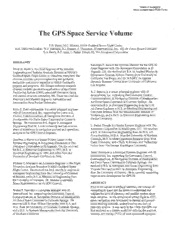
The GPS Space Service Volume

King, Stephen - Elevation

Modern Drummer Issue 381
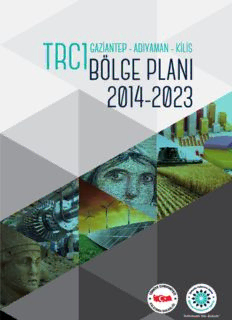
bölge planı tanımı ve planın hazırlanma süreci 7
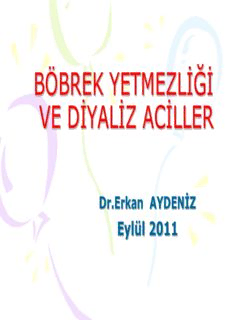
böbrek yetmezliği ve diyaliz aciller

Bette Midler: Still Divine
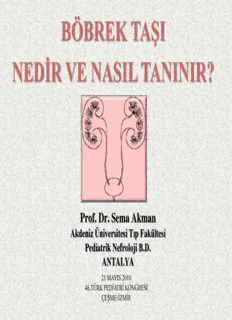
böbrek taşı nedir ve nasıl tanınır?

ERIC EJ744021: Investigating Functions Using Real-World Data
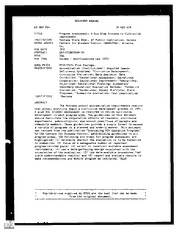
ERIC ED362564: Program Assessment: A Six-Step Process to Curriculum Improvement.
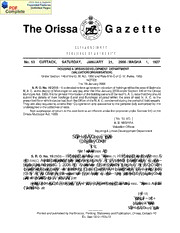
Odisha Gazette, 2006-01-07, No. 53

Greek Government Gazette: Part 2, 1993 no. 611

Développement durable : Quelles politiques ?

Identification of neonatal near miss by systematic screening for metabolic acidosis at birth.

Is Australia an Asian Country?
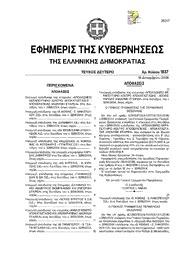
Greek Government Gazette: Part 2, 2006 no. 1837

